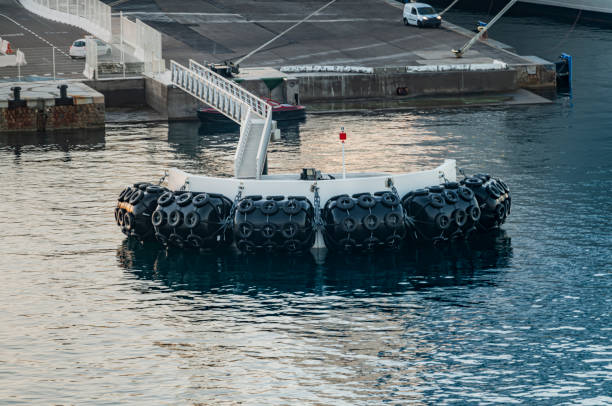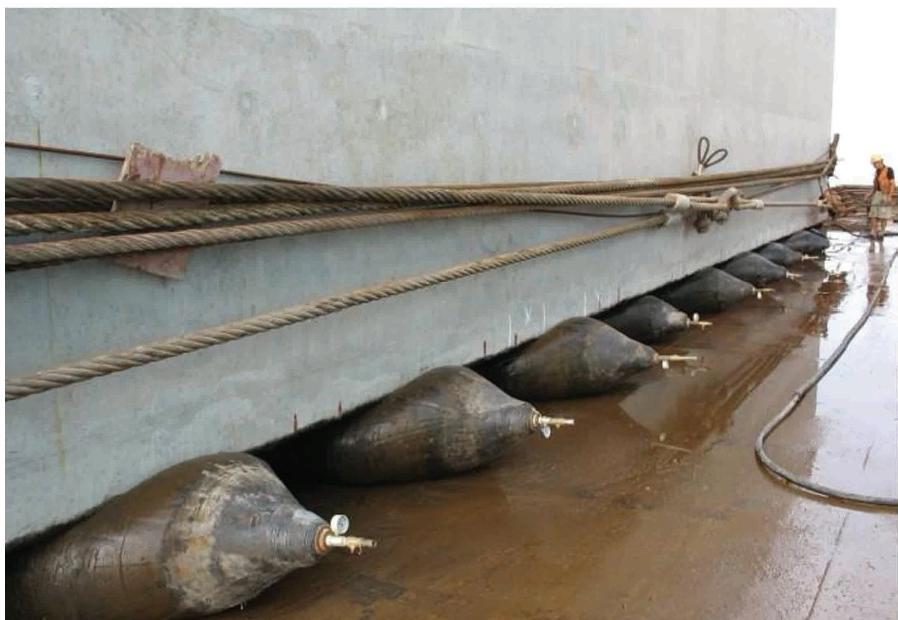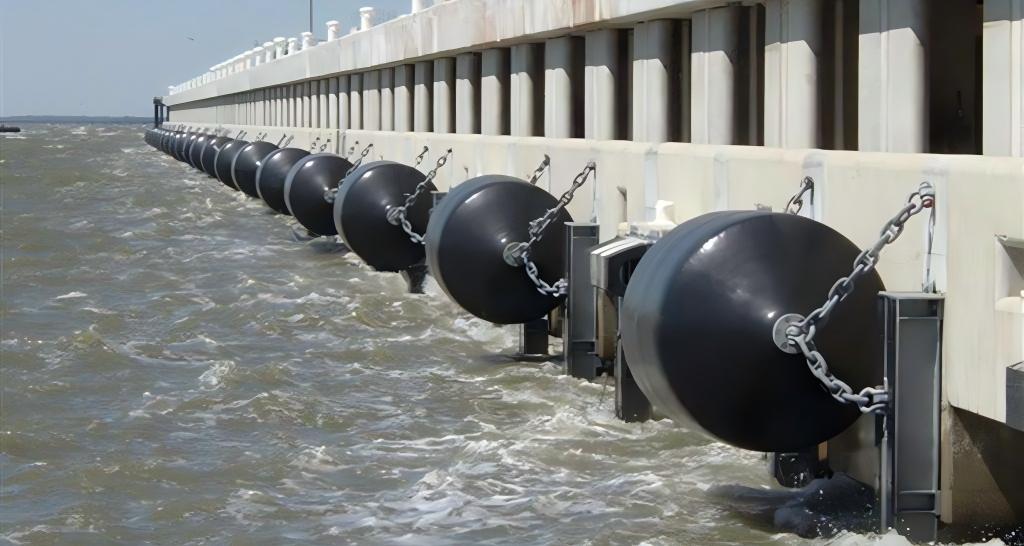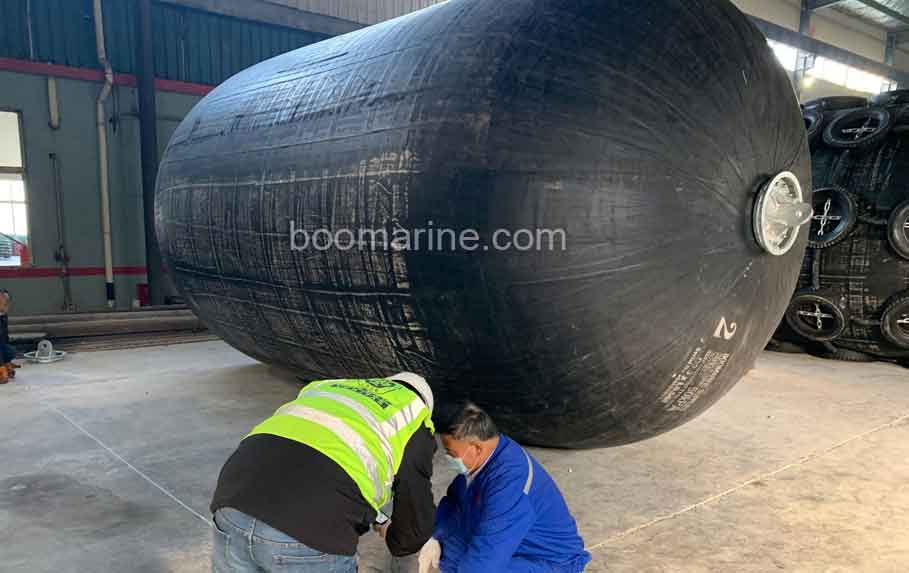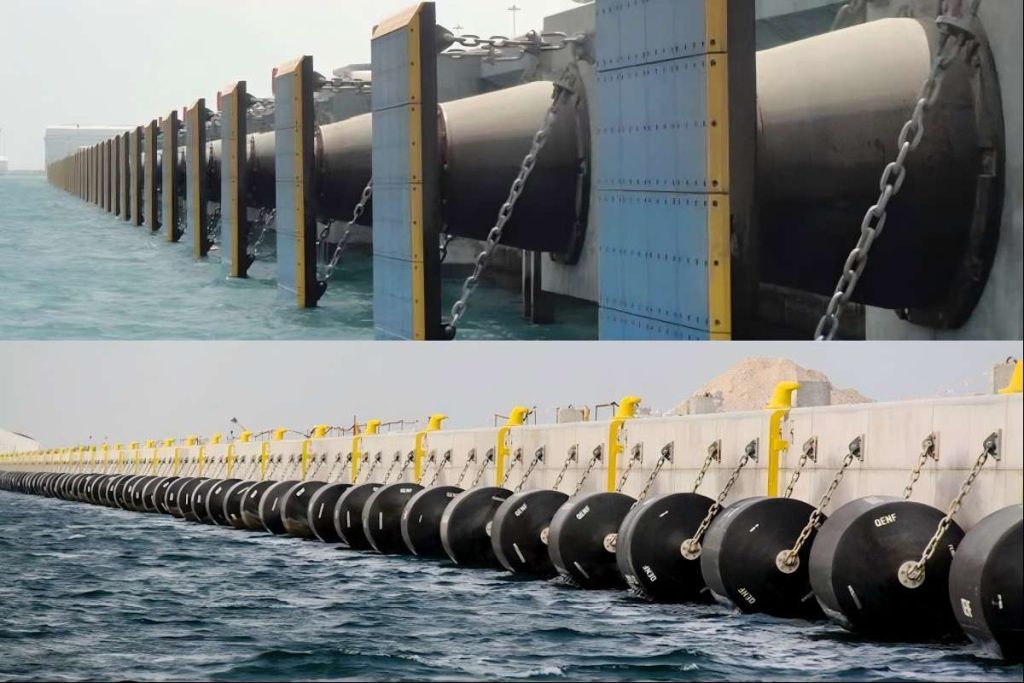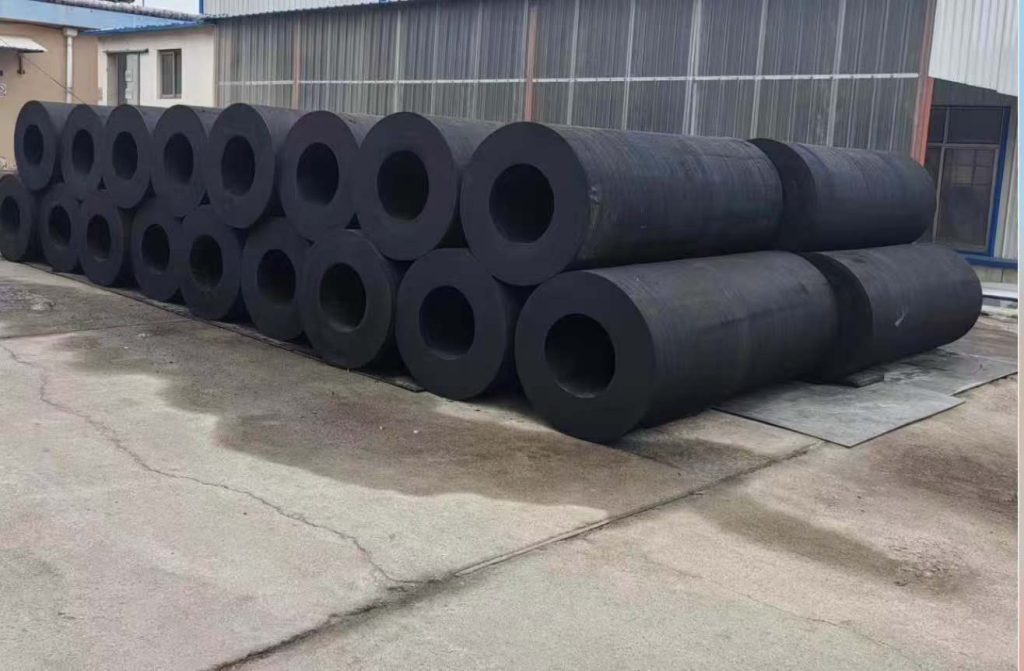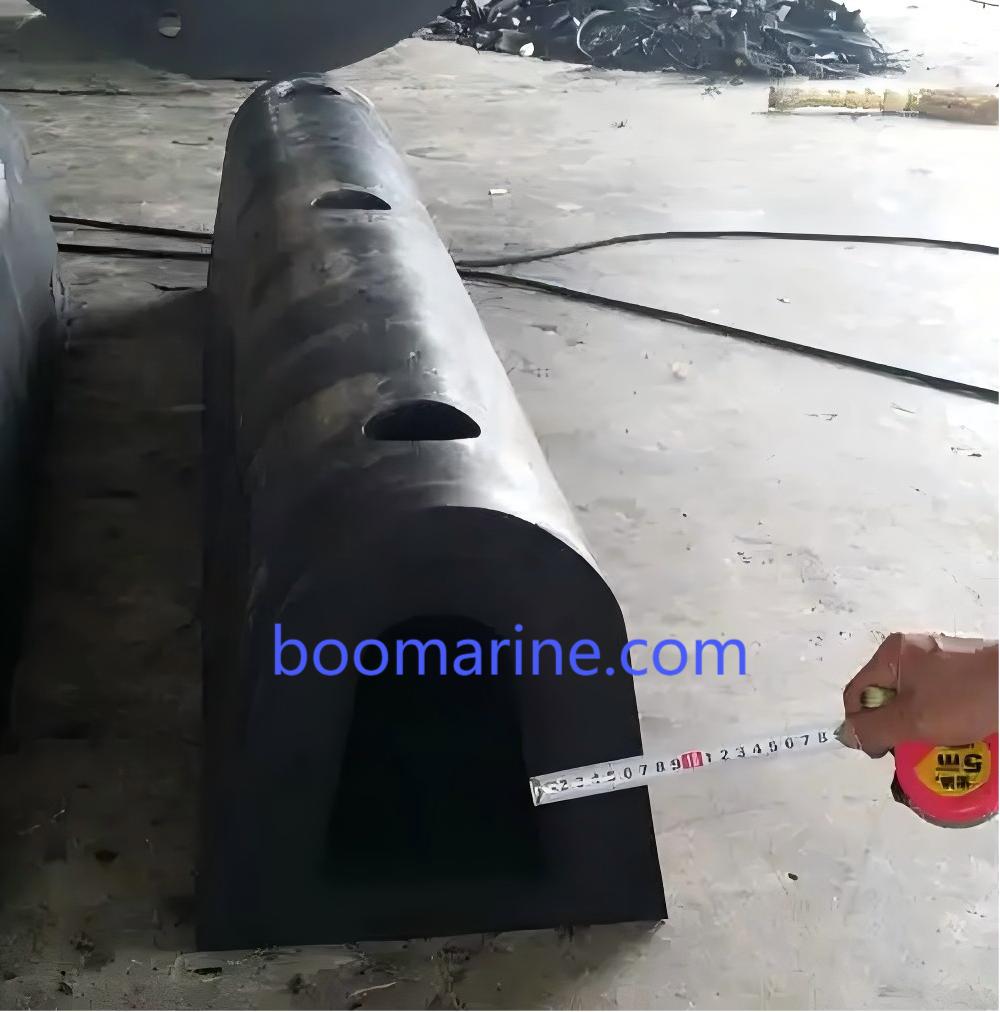Marine rubber fender is a very important protection tool in the shipping industry. Every ship going to sea must be equipped with marine fenders, to ensure the personal safety of the personnel on board. Therefore, the requirements for the protection and storage of it are becoming higher and higher.
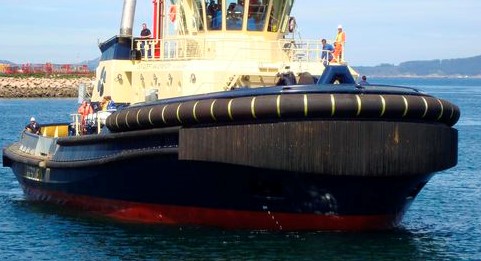
About Rubber Fender
Rubber fender is installed on the wharf or ship to absorb the collision energy between the ship and the wharf or ship when docked or moored and protect the ship and the wharf from damage.
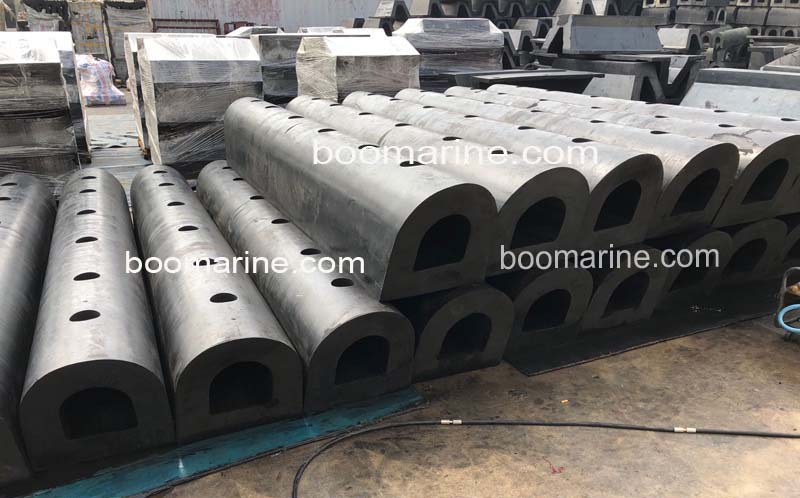
Reasons for Damage to Rubber Fenders
1. Overloading of Ships
This situation is more common in D-type fenders and V-type super arch rubber fenders. It often cracks at the weak points of the structure, and the cracks are generally in the length direction. The main reason for the cracking is that the kinetic energy of the ship hitting the fender is too large, which exceeds the load that the rubber fender can bear. When the berthing speed and angle are too large, the bow will contact the wharf and rubber fender before the middle of the hull, resulting in damage.
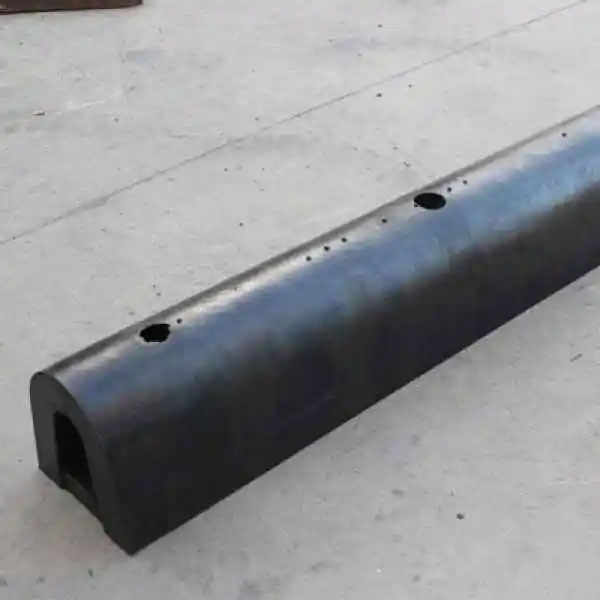
2. Poor Anchoring and Connection
This has happened in all kinds of rubber fenders. The main reason for this phenomenon is that the bolts or iron chains anchoring the fender are not in good technical condition, or the maintenance is not up to date. The anchor bolts, iron chains and other metal materials used to fix the fender corrode rapidly in the marine environment and are not easy to replace, resulting in poor fixation of the rubber fender, which seriously affects the normal use of the fender.
3. Friction Damage
This usually happens in fixed D-type super arch fenders and V-type rubber fenders. The fender is mainly damaged by corner dropping, cracking, and surface abrasion. When the ship approaches the shore at a relatively high tangential speed, the contact part between the rubber fender and the hull is forced to move forward together with the ship due to excessive friction, causing the fender to be sheared and damaged. In addition, during the mooring operation, the ship sometimes needs to move back and forth, and the ship’s left-right or up-down shaking caused by waves and currents may also cause damage to the fender.
How To Store Rubber Fenders?
Storage Requirements:
The storage area of the fender is about 400 square meters.
Environmental Protection Requirements:
During storage, rubber fender products should avoid direct sunlight, rain, and snow, and contact with acids, alkalis, oils, organic solvents, and other substances. The storage temperature shall be kept at -15℃ – 40℃, 1m away from the heat source.
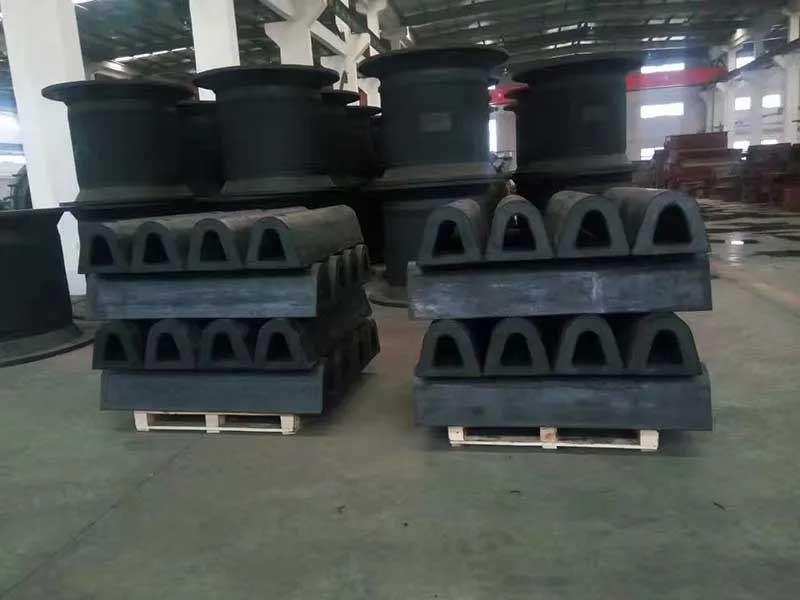
What Should Be Paid Attention To In The Daily Inspection?
After the fender device is installed, the first three ships shall be inspected whenever the ship comes ashore, and then inspected regularly every month.
- Check whether the foot bolts for installing the fender body and the bolts for fixing the anti-impact plate are loose. If they are loose, after tightening, the fixing bolts and the base plate shall be fixed by spot welding.
- Check the fender body for cracks, cuts, and other abnormalities. In case of deep cracks, please contact our company in time.
- Check whether the anti-collision plate is dented, cracked, or corroded. To prevent the anti-corrosion of the anti-collision plate from rusting, try to carry out anti-corrosion treatment once a year.
- Check whether the anti-collision plate tilts forward. The accumulation of materials inside the anti-collision plate can easily lead to forwarding tilting. Therefore, the accumulation inside the anti-collision plate should be removed as much as possible.
- Check whether the anti-impact plate surface is scratched or crushed. Replace the damaged panel in time.
- Check whether there are cracks in the concrete for fender installation. If there are cracks, contact the civil engineering department for treatment.
- Check whether there is any abnormality in the rubber elastic parts of the lifting anti-impact plate. If there is any abnormality, deal with it and replace it in time.
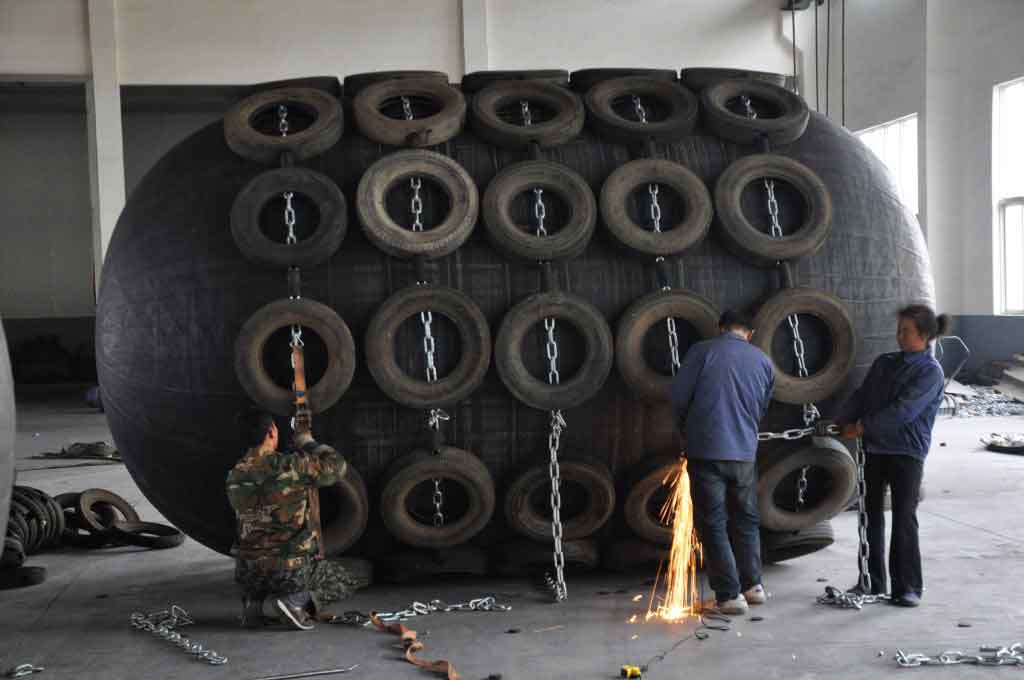
What Should Be Paid Attention To In The Use of Rubber Fender?
- Check whether the fender is damaged and whether the air pressure is normal.
- Check whether there are sharp objects on the surface contacted by the fender rope, and pay attention to prevent damage to the rubber fender.
- The place where the rubber fender is stored should be far away from the heat source and should not be placed in a place with high temperatures.
- Keep the rubber fender away from acidic and alkaline substances and pay attention to its cleanliness.
Summary
We must do a good job in the maintenance and inspection of marine rubber fenders to ensure the smooth progress of navigation. The above are some problems that should be paid attention to in the use of marine fender.


